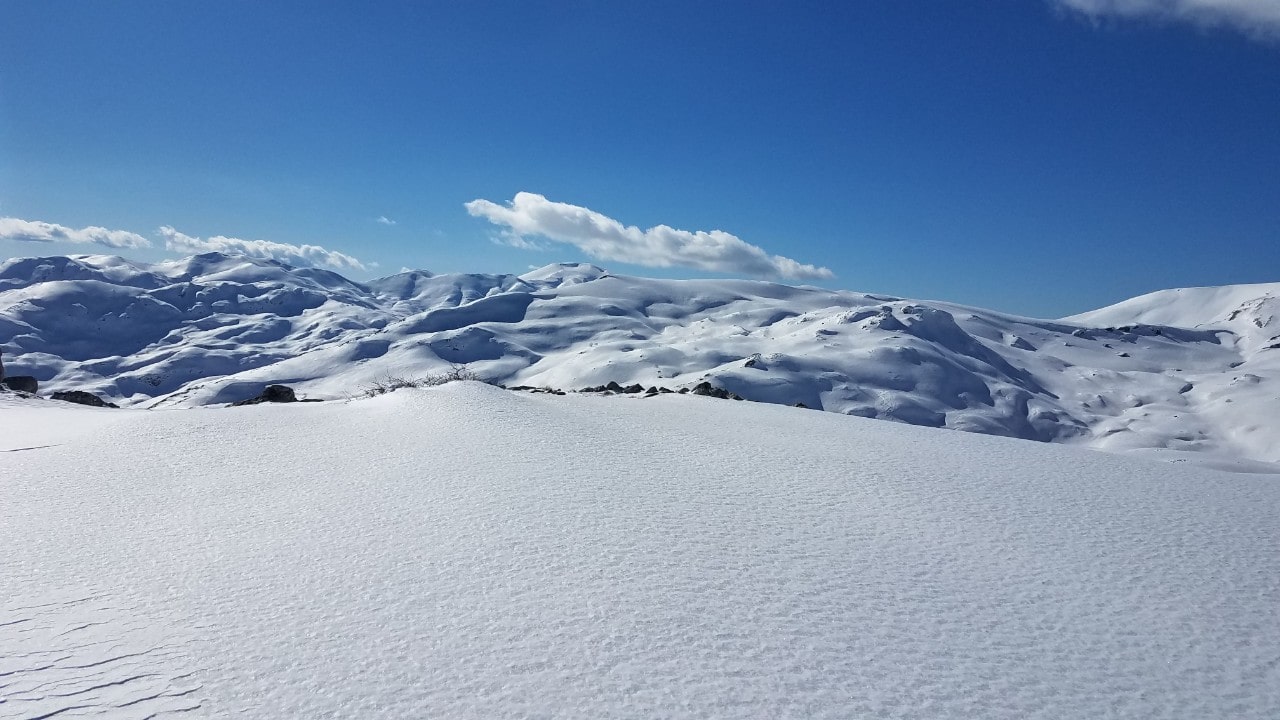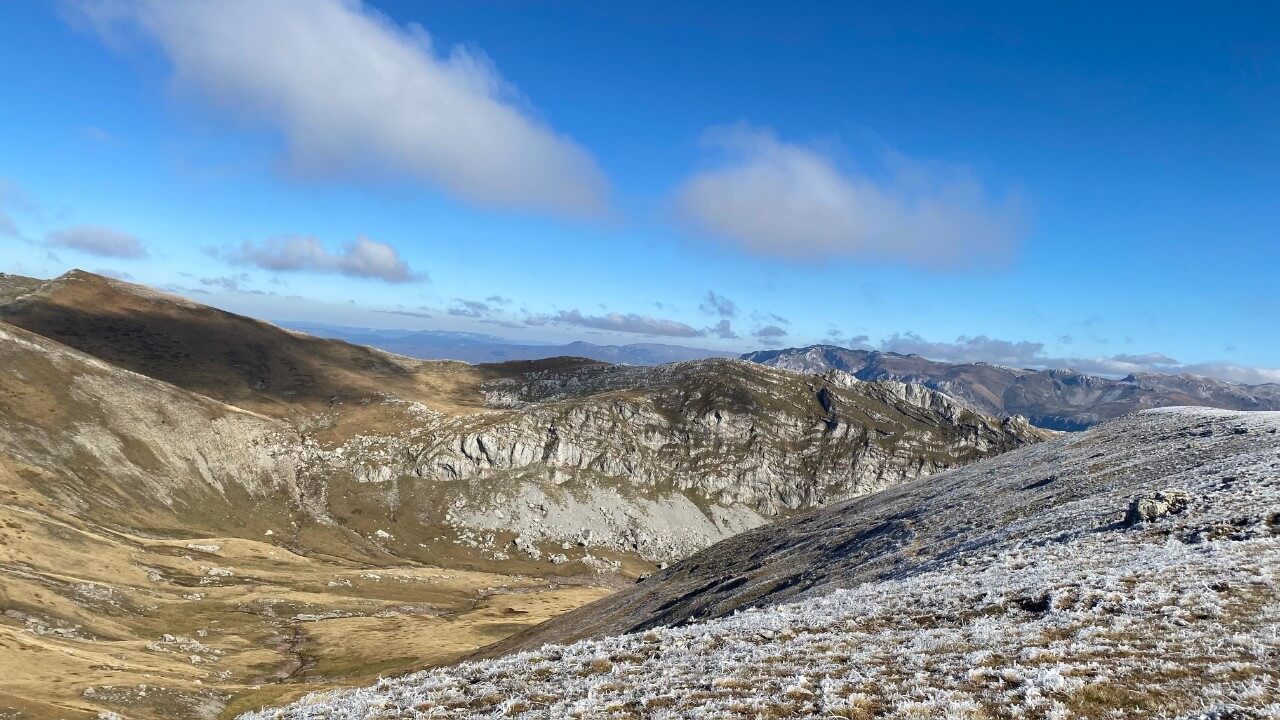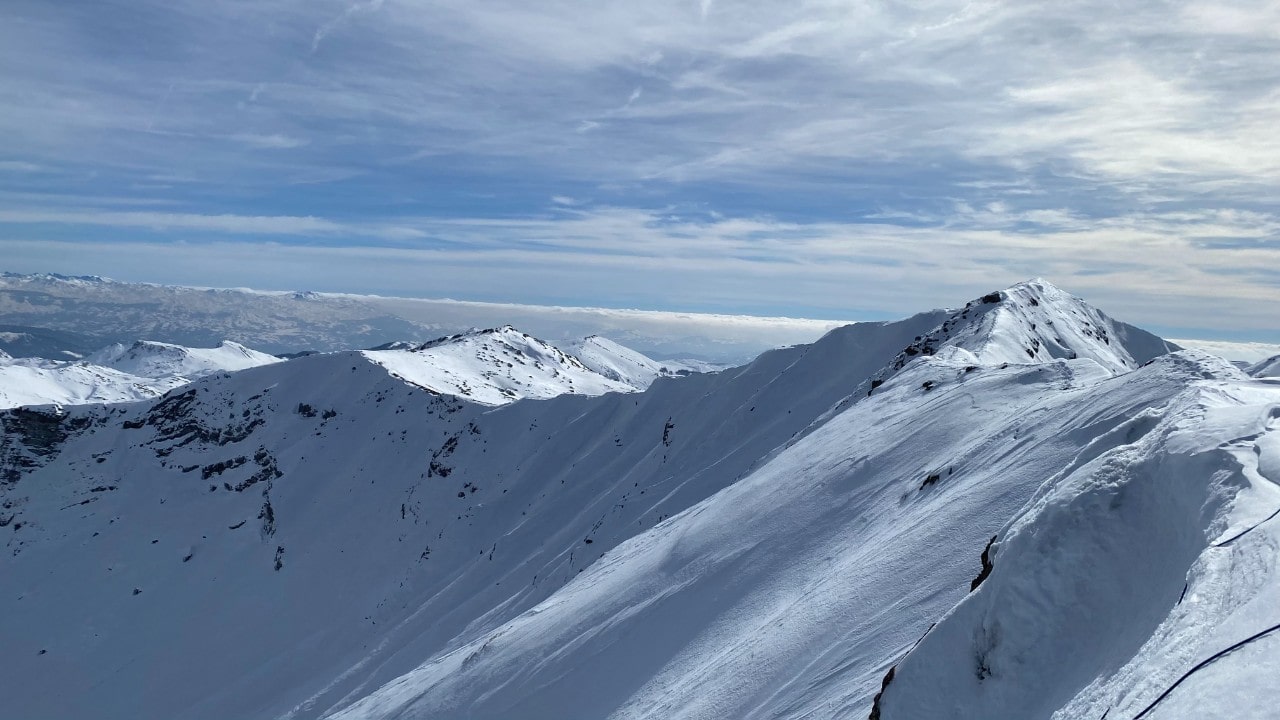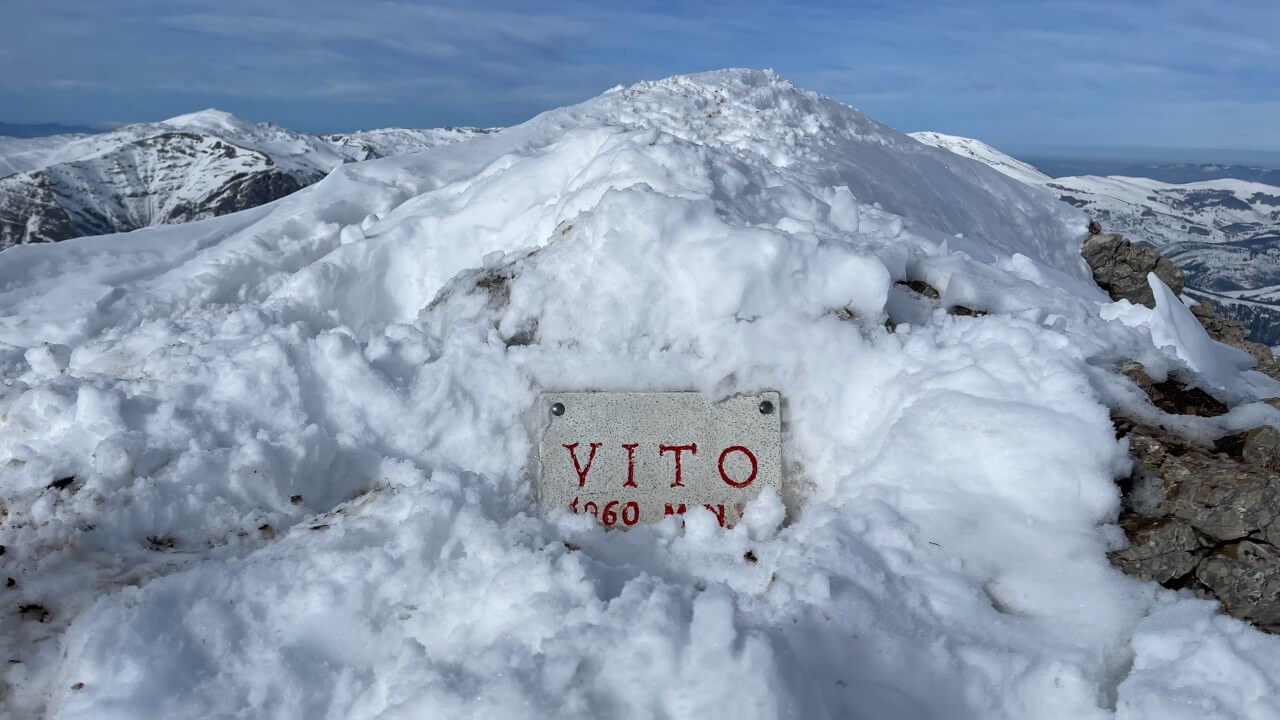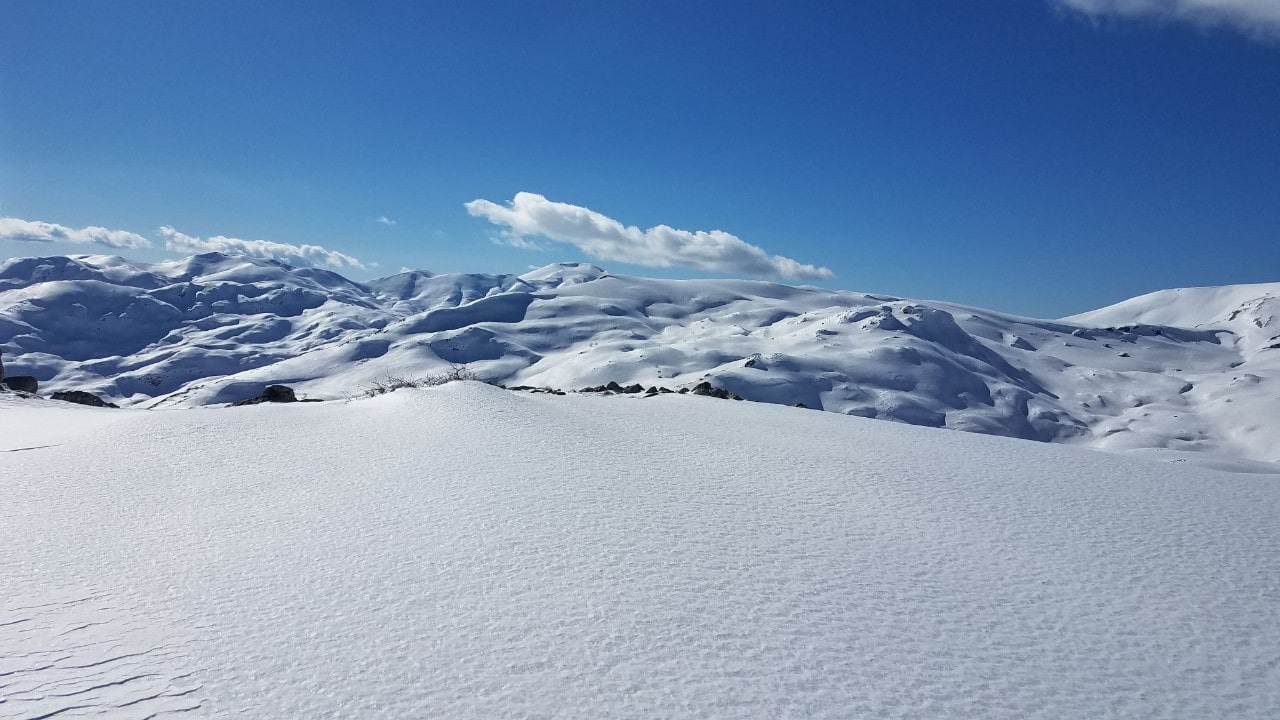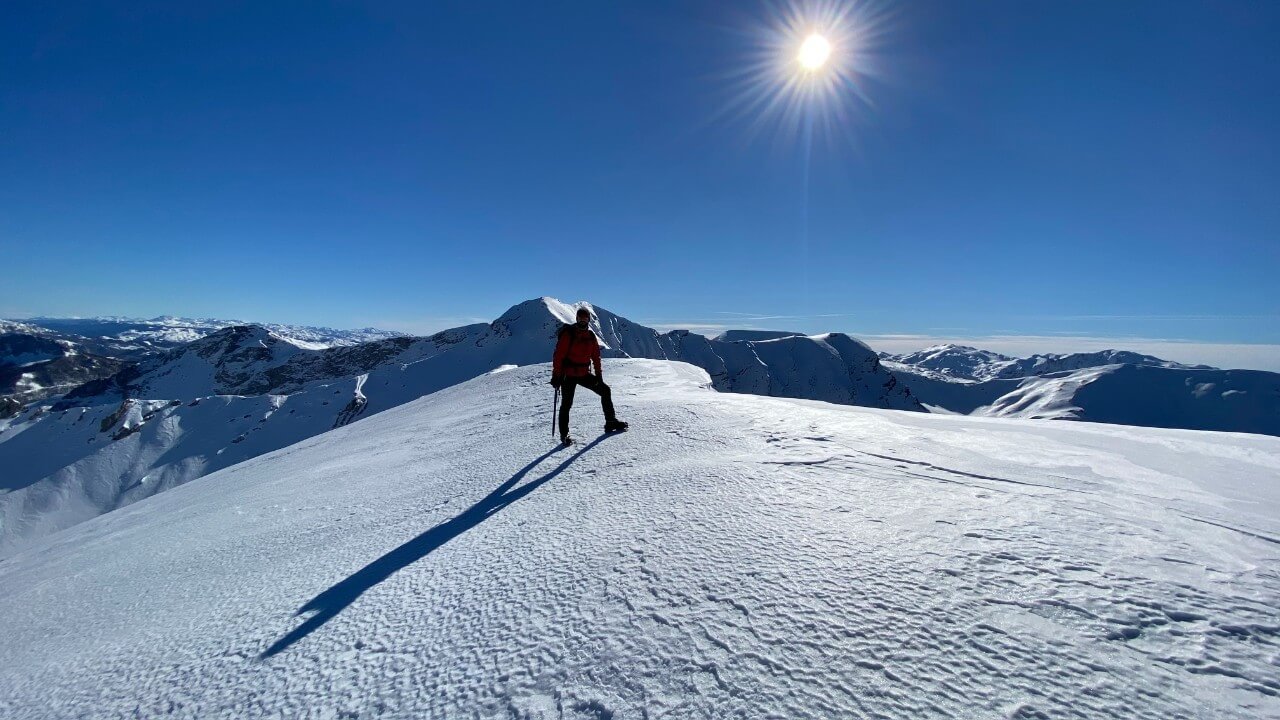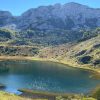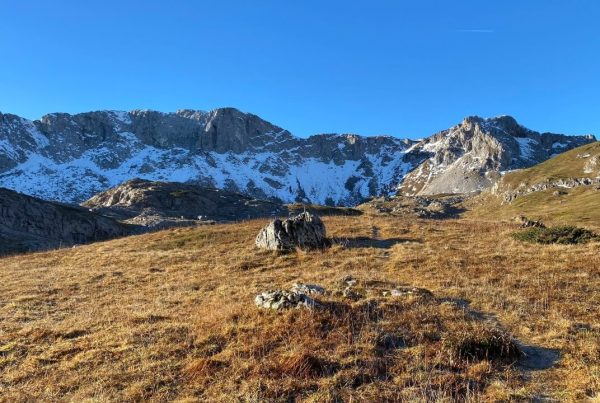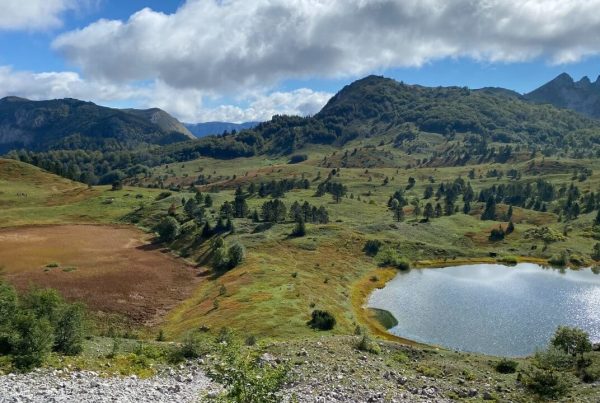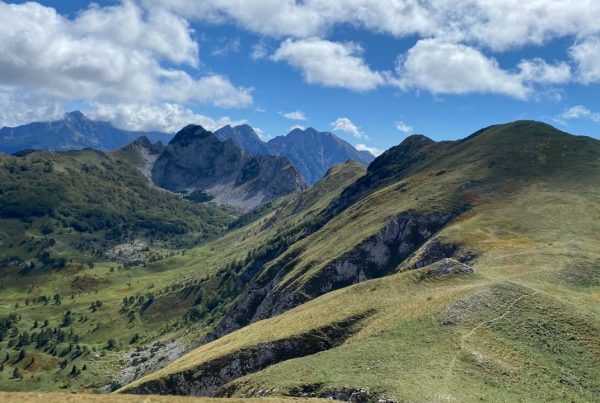Explore the stunning Visočica mountain on foot and experience the natural beauty of Bosnia and Herzegovina. From wildflower-covered slopes and ancient tombs to challenging winter ascents and breathtaking views of the Rakitnica canyon, Visočica offers an unforgettable hiking and mountaineering adventure. With various trails and routes to choose from, both beginner and experienced hikers can enjoy the diverse landscape and rich cultural history of this stunning mountain.
Visočica mountain location and access to hiking trails
Visočica Mountain is a natural frontier between Bosnia and Herzegovina, bordered to the east by the Ljuta River and Treskavica Mountain, to the south and southwest by the Neretva River and Prenj Mountain, and to the west and north by the Rakitnica River canyon and Bjelašnica Mountain. The area is a great destination for hiking and mountaineering enthusiasts.
Visočica mountain boasts several peaks including Džamija, the highest peak with 1967 meters above sea level. Other notable peaks include Veliki Ljeljen, Mali Ljeljen, Vito, Subar, Veliko brdo, and Drstva. South of the village of Sinanovići, adventurous hikers and mountaineers will find the striking Puzim peak at 1776 meters high. With steep cliffs that attract alpinists, it’s important to note that the area around Puzim is mined and should only be visited with a guide.
The villages of Bobovica, Ozimine, Đulbašići, Pervizi (Donja Tušila) and Sinanovići (Gornja Tušila) lie below the northern slopes of the mountain, at an elevation ranging from 1150 m to 1300 m. These villages are typical mountain settlements. The southern slopes of the mountain are home to numerous villages, including Luka, Ježeprasina, Odžaci (Bjelimići), Gradeljina, Svijenča, Argud, and southwest Dužani, Blaca, Dudle, Grušča, and Prebilje. These charming mountainous settlements are situated at an elevation ranging from 950 meters to 1150 meters.
Visočica mountain was extremely isolated for centuries, as evidenced by the numerous necropolises of ancient tombs. In response to invasions, the native Bogumili took refuge in the most remote and inaccessible areas, constructing villages there. Due to the lack of roads and high-quality communication infrastructure, the villages at the foot of the mountain remained disconnected, making Visočica one of the least explored mountains in Bosnia and Herzegovina until recently.
Visočica’s beauty is showcased in its stunning alpine peaks, flourishing high-altitude pastures, and breathtaking vistas of the Bosnian mountains, from Maglić to the Rakitnica canyon. In the summer, these pastures are filled with flocks of sheep. The view towards Mount Treskavica is especially breathtaking, as is the view of Prenj, one of the most beautiful mountains in Bosnia.
Visočica boasts wide flower meadows, spring-fed lakes, slender peaks, and sharp ridges, all adding to its picturesque beauty. Hiking along the exposed ridge between the peaks of Drstva and Vito will provide a true high-mountain experience, and the stunning view of the Rakitnica canyon is sure to thrill adrenaline-seekers.
Visočica was an important part of the Bjelasnica transversal mountain road, and reaching its highest peak, Dzamija, at 1,967 meters above sea level, as well as the second peak, Vito, at 1,960 meters, required a multi-day trek, particularly in winter.
In recent years, access roads to the villages at the foot of Visočica have been constructed, enabling visitors to reach the mountain within an hour’s drive from Sarajevo, covering a distance of around forty kilometers. Another approach is from the town of Konjic, through the village of Bjelimici. Forest roads have been established, allowing visitors to explore the stunning parts of Visočica with an all-terrain vehicle.
Many areas offer “jeep safari” tours that provide access to the edge of the Rakitnica canyon, allowing visitors to enjoy panoramic views. A particularly scenic route starts in Sarajevo and follows the asphalt road through the villages of Šabići and Sinanovići before continuing on a dirt road under the striking Puzim peak, through Bojadza dol, and on to the village of Luka. The tour then continues on the asphalt road through Glavaticevo before reaching Konjic.
From the picturesque village of Luka, visitors can embark on an exciting journey up the Visočica mountain via a well-maintained macadam road that leads just below the top of Dzamija peak into Grusadsko polje and towards the edge of the Rakitnica canyon. The route, which is best tackled during the summer and autumn months, features a stunning landscape comprised of high mountain pastures. Those with a reliable all-terrain vehicle can traverse a rough macadam road that runs down the canyon’s edge, leading through the village of Prebilje to the village of Grušča and on to Glavatičevo. Along the way, visitors are treated to breathtaking vistas of the Rakitnica canyon and the surrounding mountains, including the majestic Prenj mountain. This makes it a popular destination for hiking and mountaineering enthusiasts looking for a thrilling adventure in the great outdoors of Bosnia and Herzegovina.
During summer and autumn, the lush slopes of Visočica mountain are adorned with vibrant flowers, medicinal plants, forest berries, and mushrooms, offering a perfect hiking and mountaineering experience. The secluded areas of the mountain are also open for hunting, where you can spot various wildlife typical of this climate. Meeting the friendly local shepherds is a unique experience, as they share interesting stories and offer their delicious homemade dairy products like milk, cheese, and cream.
Visočica mountain is not only a natural wonder but also a historical treasure. The area is home to numerous Stećci necropolises, ancient Bosnian tombs that hold a great deal of historical and cultural significance. Explorers and researchers can embark on an exciting off-road adventure to reach some of these tombs and uncover the secrets of the enigmatic Bosnian Bogumili.
Hiking Visočica Mountain Highest peaks: Džamija and Vito
However, among all the activities and excursions offered by Visočica mountain, reaching the summit of Vito is a remarkable experience for hikers and mountaineers. Starting from the village of Sinanovići, visitors can stay at the “Vrela” mountain lodge and embark on a two to three-hour climb to this prominent peak. You can reach the village mountain lodge by following google maps link here. Mountain lodge “Vrela” is actually in village of Tušila, but this can be considered as part of Sinanovići village too, so don’t be confused.
The reward for reaching the top is a breathtaking panoramic view of the surrounding mountains and the Rakitnica canyon.
The canyon below the top of Vito offers the best view of the Rakitnica river’s work. During summer, climbing to the top of Vito is an easy hike that doesn’t require alpinist knowledge or excessive mountaineering experience. However, a winter ascent is a challenging and rewarding experience that requires snow climbing skills and proper equipment, such as an ice ax, crampons, hat, gloves, and goggles. The weather can be harsh, even on sunny days, with strong winds and cold temperatures. Therefore, hikers must be cautious and prepared for sudden changes in weather conditions. If you plan to climb above 1500 meters, make sure to bring proper equipment, as the return journey can be risky due to the formation of ice in the afternoon when temperatures drop.
From the summit of Vito, skiing enthusiasts can embark on an exhilarating ski tour through the southern and eastern slopes. Another option is to ski down the same way to the mountain lodge, where you can enjoy excellent skiing conditions.
Ascending the peak of Dzamija in winter is a challenging but rewarding high-mountain tour that can be completed in a long day, especially with a guide. If you are feeling adventurous, it is possible to repeat the previously climbed alpinist ascent or make a first ascent on the northern rock of the peak. However, this requires excellent physical fitness, ski touring skills, and experience with an ice ax and crampons, as well as the willingness to bivouac overnight. In the spring months, you can enjoy pleasant ski touring until mid-May.

